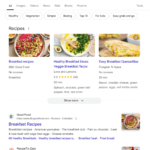

Many companies divide marketing responsibilities across multiple specialists: graphic designers, social media managers, marketing operations managers, content marketers and email marketers, to name a few.
In this setup, each person contributes a small part of a larger effort, and while it ensures expertise, it often slows down the time it takes to execute marketing strategies. This assembly-line structure, effective in past years, struggles to keep pace with today’s customer expectations for timely, personalized interactions.
Customers now expect brands to engage with them in ways that feel relevant, immediate and aligned with their needs. A rigid assembly-line approach often results in missed opportunities because, by the time a message has moved through multiple hands, the chance for impactful engagement may have passed.
Position-less marketing offers an innovative solution by creating a team of versatile, cross-functional marketers who can seamlessly shift between roles, ensuring faster, more cohesive marketing.
Position-less marketing isn’t about downsizing to a department of one. Instead, the marketer becomes a versatile force, capable of executing end-to-end strategies that deliver real-time results. Empowered by AI and adaptable tools, this role isn’t about doing more with less—it’s about achieving agility and precision that only the right technology can provide.
In the end, it empowers all marketing team members with a trifecta of capabilities:
- Data power: Marketers can instantly analyze customer data to discover insights that lead to better audience segmentation and message personalization without needing a data expert on standby. For example, a single marketer can identify high-value customers and instantly deploy personalized product recommendations, driving immediate revenue without needing a dedicated data analyst.
- Creative power: The same team member can generate assets on the spot for any channel. Imagine a campaign manager who can quickly design graphics for an email campaign during a product launch, without waiting for a designer. This flexibility allows marketers to respond to trending moments as they happen, boosting engagement.
- Optimization power: Leveraging AI-driven automation, this same position-less marketer can launch campaigns that adapt and optimize themselves. For instance, they can deploy dynamic email journeys for a campaign that automatically adjusts based on customer interactions, promoting tailored content and offers without requiring manual intervention. With A/B/n testing running in the background, each journey continually refines itself to maximize relevance and impact.
The shortcomings of assembly-line marketing
In contrast, traditional assembly-line marketing struggles in several areas:
- Lack of agility: An assembly-line structure often creates bottlenecks, with each campaign moving sequentially through design, content and analysis teams. For example, if a retail brand identifies a sudden trend in eco-friendly products, the time it takes to launch a targeted campaign across channels may take too long, and competitors who can pivot more quickly will likely capture the trend.
- Disjointed customer experience: When marketers work in isolated functions, customer interactions often feel fragmented. A social media manager might post brand updates without knowing that the email team is running a different promotion, resulting in a scattered brand message. Position-less marketers, in contrast, understand the whole journey and can create cohesive, cross-channel experiences. For example, a loyalty program manager could easily collaborate with social media and email teams to send unified, personalized rewards that resonate across all touchpoints.
- Data silos and missed insights: In a typical setup, the social media team may see valuable engagement insights that never reach the email marketing team, limiting the opportunity for integrated campaigns. Position-less marketers break down these data silos, gaining a holistic view of the customer journey. For example, a position-less marketer might analyze social media data on customer preferences and quickly pivot an email campaign to reflect those insights, driving higher engagement and relevance.
- High costs and inflexibility: Employing narrowly focused specialists can be costly and inefficient, especially if business needs change. For example, if a B2C company suddenly needs to focus more on customer retention rather than acquisition, it may find itself overstaffed with acquisition specialists. With position-less marketing, companies can adapt to shifting needs by leveraging multi-skilled marketers who pivot quickly, reducing overhead while increasing adaptability.
- Limits on creativity and innovation: Traditional structures often restrict creativity, as each specialist focuses on their defined tasks. This approach can stifle innovation and keep marketers from experimenting with new ideas. For example, if a brand’s campaign requires collaboration between the design and content teams to create interactive, personalized web experiences, position-less marketers can brainstorm and execute these creative ideas in real-time rather than waiting for handoffs between teams.
The Position-Less Advantage
Today, companies need flexibility, speed, and the capacity to respond to customer needs as they emerge. A position-less marketing team provides these advantages, enabling brands to deliver relevant and dynamic experiences while building customer loyalty. When marketers are unrestrained, free to work fluidly across roles, they can make quick, data-informed decisions, continuously experiment with new ideas, and drive measurable outcomes.Adopting a position-less marketing model allows brands to pivot and adapt to meet evolving customer demands, and the latest technologies — from AI to real-time analytics — make this possible. By embracing position-less marketing, brands can create seamless customer experiences, unify data insights and maximize the efficiency of their marketing investments. As a result, position-less marketing becomes a driving force in building long-term customer loyalty and optimizing customer lifetime value.
Position-less marketing is a movement that transforms how brands engage customers, build lasting relationships, and optimize customer lifetime value.
The post Stop killing customer engagement with assembly-line marketing: Embrace position-less marketing appeared first on MarTech.









